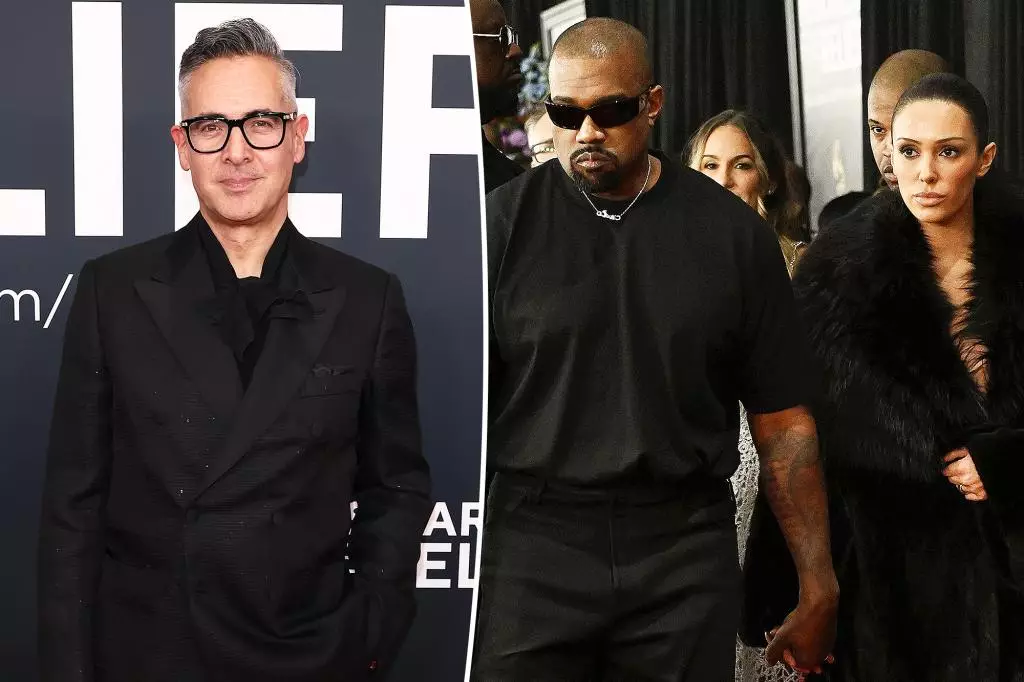The Grammy Awards, a cornerstone of the music industry, not only celebrate musical achievements but also serve as a significant platform for fashion statements. The recent remarks by executive producer Raj Kapoor highlighted the ongoing tension between artistic expression and established dress codes at the event. The incident involving Kanye West and Bianca Censori, particularly their choice of attire, has reignited discussions about the essence of fashion at high-profile ceremonies and its intersection with personal branding.
The Dress Code Dilemma
In a conversation with People Magazine, Kapoor elucidated the nuances of the Grammy dress code, describing it as an “artistic black-tie” standard. He recognized the subjective interpretation of this guideline within the music industry. This remark inevitably calls attention to the broader implications of how attire can represent artistic identity or, conversely, fall short of the expected decorum. While Kapoor underscored the importance of adhering to standards, he acknowledged a discrepancy in expectations—particularly for nominees and performers. This disparity raises questions about what it means to truly belong in a space defined by creativity yet bound by rules.
The discussion is compounded by CBS’s historical context surrounding wardrobe restrictions. A wardrobe advisory issued in 2013 questioned certain societal norms, mandating a level of modesty that contradicts some artists’ expressions. The advisory explicitly called for “adequately covered” body parts, mentioning limits on sheer clothing and suggesting that the “genital region is adequately covered.” These stipulations highlight the longstanding tension between censorship and artistic freedom in fashion.
Censori’s choice of outfit—a transparent minidress reminiscent of sheer stockings—can be viewed through multiple lenses. While some see it as a groundbreaking statement against conventional dress codes, others interpret it as a blatant disregard for the established standards. Her decision to don such an audacious ensemble, coupled with removing her overcoat at West’s urging, appeared to be a deliberate act of rebellion against the Grammys’ expected decorum.
Moreover, the couple’s intention to mirror the cover art from West’s album “Vultures 1,” where Censori was also depicted in revealing attire, suggests a calculated approach to public perception and media attention. The spin of their fashion choice raises pertinent questions about the motives underlying such provocative displays. Are they merely seeking attention, or do they signify a deeper message about freedom of self-expression?
The media frenzy following Censori’s appearance at the Grammys underscores the profound relationship between fashion, celebrity culture, and societal scrutiny. Reports indicate a split in public opinion regarding Censori’s outfit: while some criticize the choices as inappropriate, others support the boldness that comes with challenging traditional norms. An insider from Us Weekly noted that Censori and West thrive on both positive and negative attention, indicating that controversy itself can be a powerful tool for personal branding.
The couple’s decision to leave shortly after their red carpet appearance, opting instead for a private afterparty, further encapsulates the larger narrative of maintaining control over one’s image. Their ability to capture headlines while simultaneously avoiding the formalities of the ceremony reveals a sophisticated understanding of how public perception operates in the modern age.
Ultimately, the incident involving Censori and West at the 2025 Grammys serves as a microcosm of the evolving dialogue surrounding fashion in the context of cultural events. It reflects the growing tension between individual expression and the expectations that accompany prestige events. The interconnectedness of fashion, identity, and media spectacles magnifies how personal choices hold significance far beyond aesthetic appeal. As the conversation about dress codes and artistic expression continues, one thing remains clear: in the world of celebrity, what may appear as a temporary trend often resonates as a cultural commentary, challenging norms and redefining boundaries.

